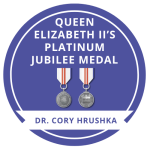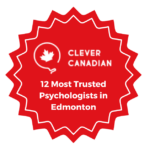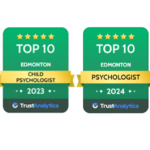EMDR (Eye Movement Desensitization and Reprocessing)
What is EMDR (eye movement desensitization reprocessing) therapy?
Eye movement desensitization reprocessing therapy (EMDR) is defined by EMDR Canada as “an integrative psychotherapy approach that has been extensively researched and proven effective for the treatment of trauma and many other mental health problems that utilizes bilateral eye stimulation or somatic responding”[1]. EMDR was developed in 1987 by Dr. Francine Shapiro. One day, when she was walking through the woods, she noticed that as her eyes darted from side to side, her own negative emotions subsided. Later, she found the same positive effect in her clients.
She began using the process on veterans who were suffering from post-traumatic stress and found that the treatment worked extremely well in relieving trauma and post-traumatic stress disorder (PTSD).
Millions of people worldwide have been treated successfully over the past 25 years.[2]
How does EMDR therapy work?
With the therapist’s help, you revisit a traumatic moment or incident and the feelings and beliefs you experience about the incident.
The therapist will move their hand back and forth in a windshield wiper motion, as you watch the therapist’s finger (much like watching ping pong) while recalling the event. Through your eye movements, the painful incident and feelings may be replaced with calmness, feelings of peacefulness and empowerment.
It seems to work similarly to the processing in the brain that happens during REM sleep. One moment can be frozen or stuck so that images, sounds, smells and feelings are experienced in the same way they were when the trauma incident occurred and feels just as bad as the first time. This can have a lasting negative effect on how a person is able to function and relate to other people. Whether helping to process trauma or any other issue, EMDR works to help the brain process information, memories, sounds, and feelings in a way that makes them be seen in a new and less distressing way. (Read more from our blog here)
When is EMDR therapy used?
You may benefit from EMDR therapy if you:
- Have experienced or witnessed violence (e.g. sexual assault, molestation, physical assault)
- Have experienced or witnessed disasters (tornados, floods, fire, etc.)
- Were involved in a motor vehicle accident
- Were a victim of or witnessed a workplace accident
- Have experienced loss (through divorce, death, being fired, etc.)
- Are a uniformed personnel, first responder or front-line worker who is bombarded by traumatic memories
- Suffer from phobias (fear of flying, fear of spiders, etc.)
- Have experienced a life-threatening event or illness.
It works quickly and may significantly lessen many symptoms if you’re experiencing the following concerns or mental health issues:
- Depression
- Panic, or anxiety
- Self-dus
- Eating disorders
- Personality disorders
- Mental health disorders
- Dealing with physical health changes
- Dealing with changes in mental health
- Abuse
- Trauma
- Self-harming
- Sexual abuse and assault
This type of therapy may be used to treat other conditions and concerns in addition to those listed above. It may also be used in conjunction with other treatment methods. Your therapist will work with you to determine the best treatment method for your individual circumstances.
You should be aware that there is no treatment method that is successful for every person. What works for you, may not work for someone else.
What to expect from therapy
Put simply, you will get out of therapy what you put into it. It’s not a magic solution that will solve all your problems. It may involve you doing some real work and being completely honest with yourself and your therapist. Sometimes facing our truth is the hardest thing of all – but from that discomfort can come healing and growth.
Insight’s therapists are available for in-person, online, or telephone counseling at several locations in Alberta. Contact us to learn more.
[1] Taken from EMDR.com
[2] https://emdrcanada.org/emdr-defined/

















